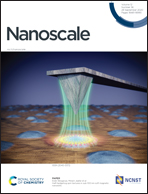van der Waals oxide heteroepitaxy for soft transparent electronics
Abstract
The quest for multifunctional, low-power and environment friendly electronics has brought research on materials to the forefront. For instance, as the emerging field of transparent flexible electronics is set to greatly impact our daily lives, more stringent requirements are being imposed on functional materials. Inherently flexible polymers and metal foil templates have yielded limited success due to their incompatible high-temperature growth and non-transparency, respectively. Although the epitaxial-transfer strategy has shown promising results, it suffers from tedious and complicated lift-off-transfer processes. The advent of graphene, in particular, and 2D layered materials, in general, with ultrathin scalability has revolutionized this field. Herein, we review the direct growth of epitaxial functional oxides on flexible transparent mica substrates via van der Waals heteroepitaxy, which mitigates misfit strain and substrate clamping for soft transparent electronics applications. Recent advances in practical applications of flexible and transparent electronic elements are discussed. Finally, several important directions, challenges and perspectives for commercialization are also outlined. We anticipate that this promising strategy to build transparent flexible optoelectronic devices and improve their performance will open up new avenues for researchers to explore.

- This article is part of the themed collection: Recent Review Articles


 Please wait while we load your content...
Please wait while we load your content...